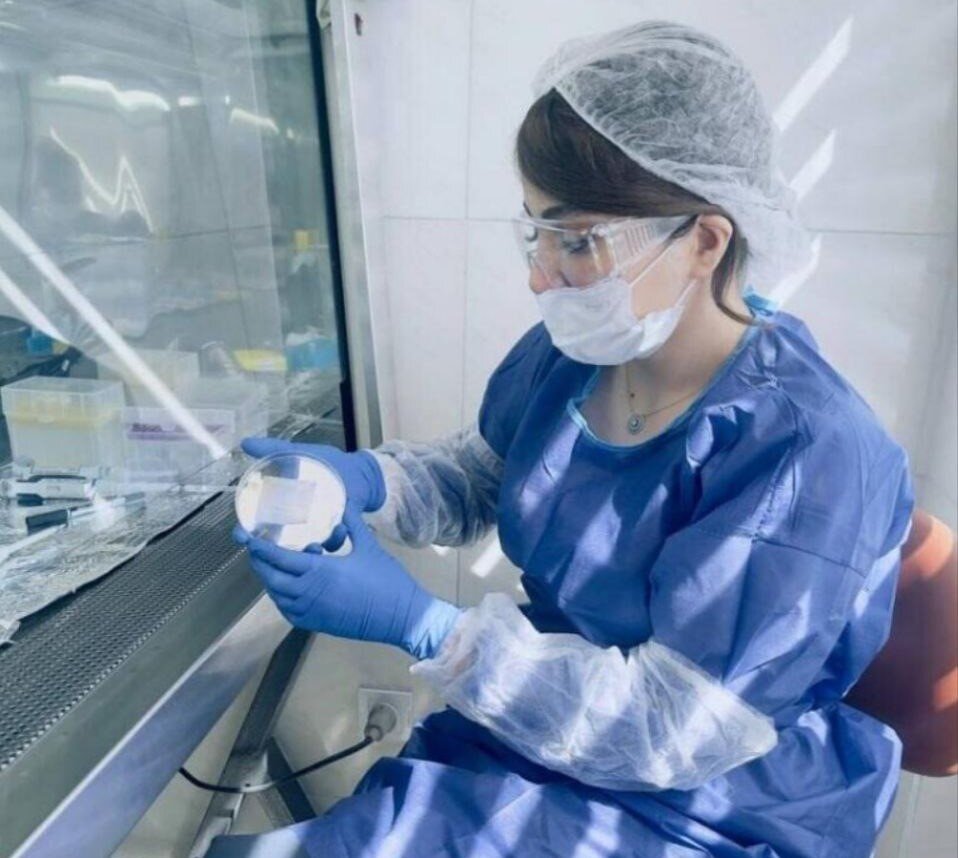Tehran – Iranian female inventor Hasti Sadat Hosseini was awarded the World Intellectual Property Organization (WIPO) Award and the 50th edition of the Invention Exhibition of the International Association for Invention Invention (IFIA) Innovation Standards (IIS) Certificate “Hasticell” 50th edition.
The event took place from April 9th to 13th, with 1,043 inventions from 42 countries and regions, with over 28,000 visitors taking part in this year’s edition.
Hosseini’s invention, Hasticell, was given the IFIA Innovation Standard Grade A.
The present invention relates to stem cell grafts for repairing wounds, particularly the cervical wounds, and the negative side effects of human papillomavirus (HPV) on the cervix. This miraculous graft is effective in other fields of medicine and surgery. It is extracted from the fetal membrane of the placenta. Biological bandages made of amniotic membranes include an epithelial cell layer, a thick basement membrane, and a vascular interstitial matrix.
IIS, the standard for IPIA innovation, is based on several principles, including marketable, officially patented, environmentally friendly, and economic impact. These principles are explained in more detail below. Therefore, using IIS helps to ensure that interested investors face an avant-garde community of innovators around the world who have specific characteristics.
***** WIPO 2024 releases Iran’s ranking based on GII reports
In November 2024, WIPO published its Global Innovation Index (GII) report. It ranks Iran’s innovation capabilities into seven criteria including institutions, human capital and research, infrastructure, market refinement, business refinement, knowledge and technology output, and creative output.
Iran ranks 133 in agencies around the world. In this category, the countries’ global rankings in business, government effectiveness, rule of law, business environment, entrepreneurship police and cultural operational stability were 130, 120, 118, 128, and 85, respectively.
The country ranks 64th in terms of human capital and research criteria. They ranked 93, 109, 67, 66, and 96 in education, education spending, government funding/students, school life expectancy, and student-teacher ratios, respectively.
Iran’s graduates and researchers in higher education, science and engineering, research and development (R&D) are 35, 8, 48, and 47, respectively.
The country’s global ranking in infrastructure is 95. In total capital formation, 5th and 50th place are general infrastructure.
Under the global rankings of 17 market refinement standards, Iran is placed at 70, 58, and 19 in startups and scale-ups, domestic industry diversification, domestic market scales, and market capitalization finance.
Iran ranks 110th in terms of business sophistication. Ranked 86 in women employed with advanced degrees, 82 in public research industry joint publications, 121 in university industry R&D collaborations, and percent in research talent, and companies.
Iran ranks 49th in its output of knowledge and technology. In labour productivity growth, production and export complexity, software expenditures, ICT services export/total trade, they rank 68, 72, 3, and 125, respectively.
By creative power standards, Iran ranks 52nd. In this category, the country is placed 23rd in intangible assets, 1st in trademarks by Origin, 59 in entertainment and media markets, 93 in mobile app creation, 74th in creative goods exports, and 102nd in creative goods and services.
mt/mg

